Today’s piece is another chapter in my India travel diaries — I’ve previously written about Jaipur here and here, explored rekindling childhood friendships in Lucknow here, and most recently, delved into serendipity while traveling here, and the Uttarakhand fires here. If this was forwarded to you, be sure to subscribe so you can join me on this journey.
Vignettes from Kumaon
Following last week’s exploration of navigating the Uttarakhand wildfires, I asked you to let me know what you’d like me to write about next and the response was overwhelmingly in favour of seeing some of the candid portraits I’d captured on my travels. This actually makes my job easier, as I can rest my words a bit and let the photos do some of the storytelling.
I am really hoping that a picture is worth a thousand words, because if so, you’re in for a short thesis below. So here goes …
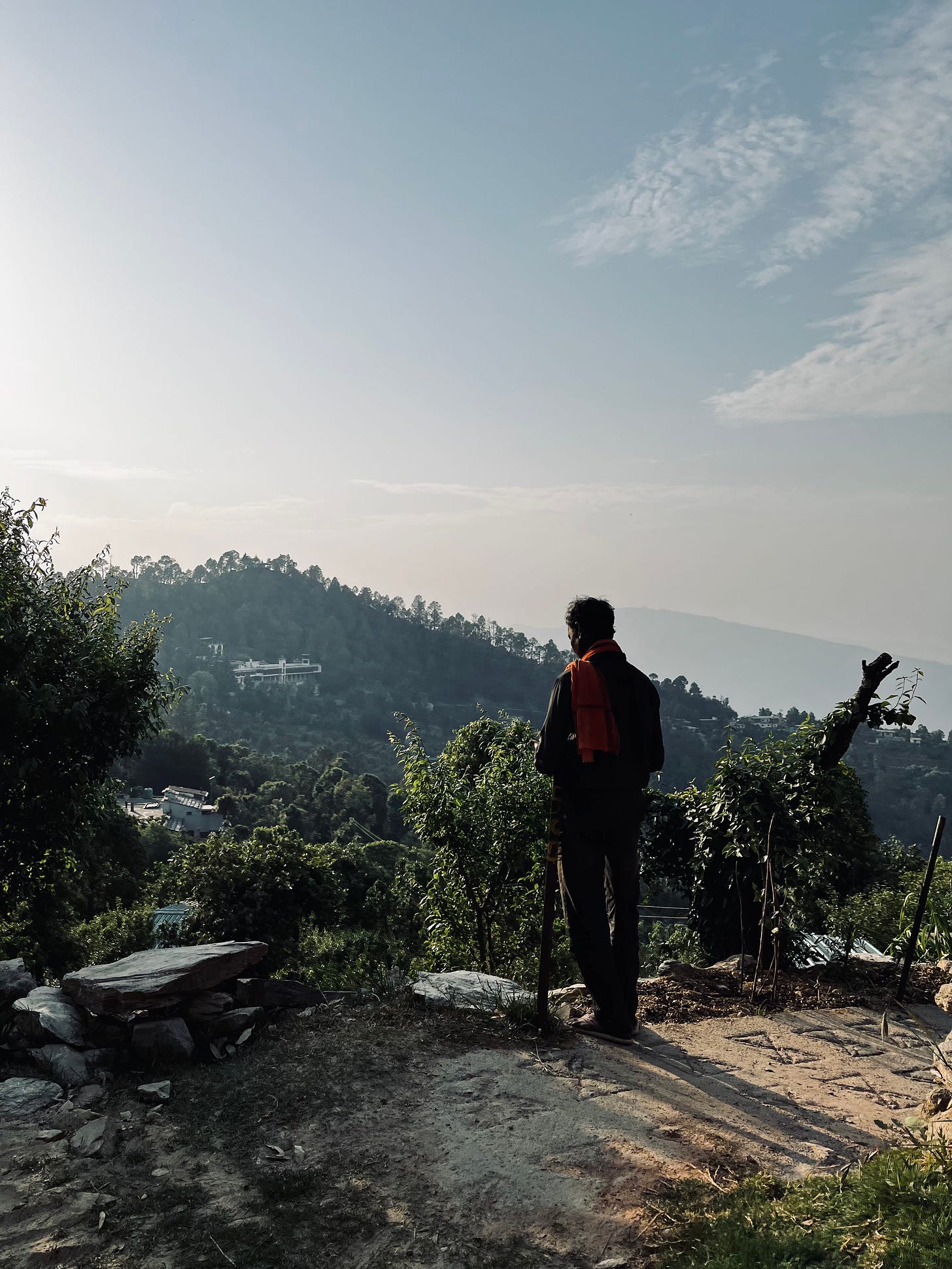
I start with an image of a worker captured in a moment of quiet tranquility while navigating the hilly terrains of Satkhol. Though his face remains unseen, his posture speaks volumes of the resilient pahadi spirit, famously immortalized by Ruskin Bond, India’s cherished writer from the foothills of the Himalayas: “It is always the same with mountains. Once you have lived with them for any length of time, you belong to them. There is no escape.”
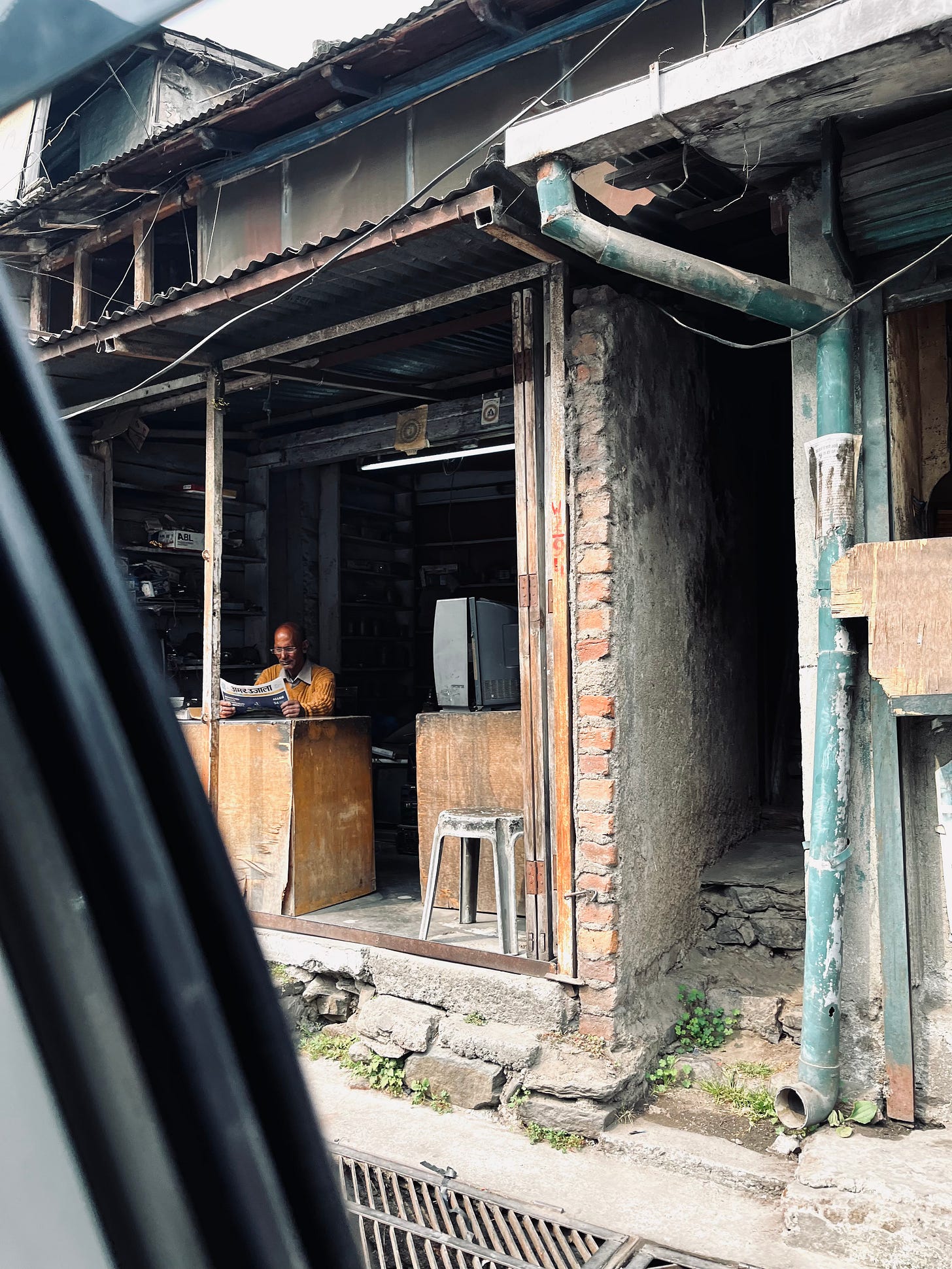
Taken in the midst of the world’s largest election campaign, this man reading the newspaper on a bright Indian summer’s day reminded me of the power of print. In the era of fake news, the written word remains kingmaker.
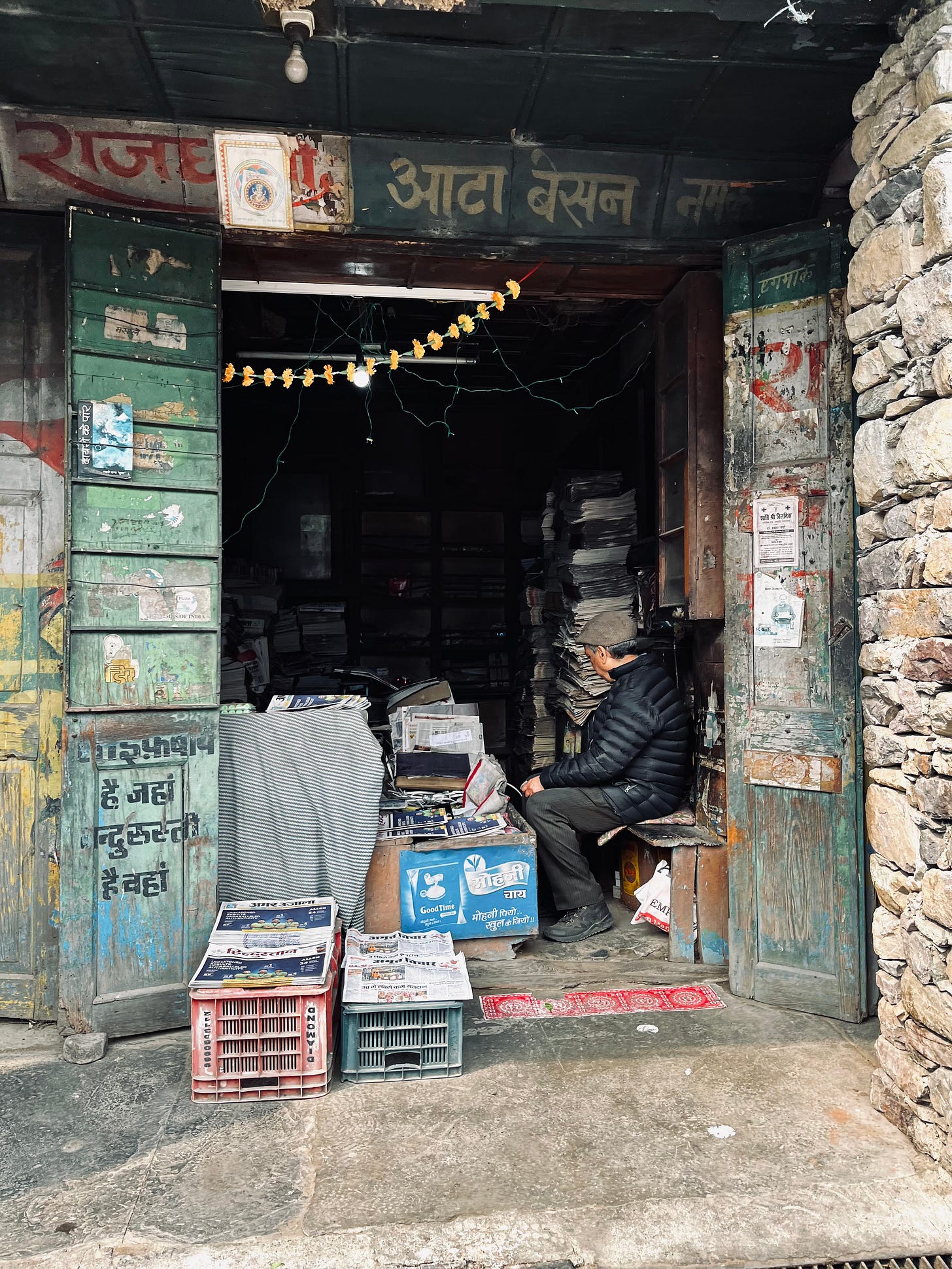
Not far away, another vendor peddles the daily news — new elections, age-old cricket; new actors, the same old movies. Though the players might change and the scripts might shift, the audience remains steadfast: Indians evolve, but India is timeless.
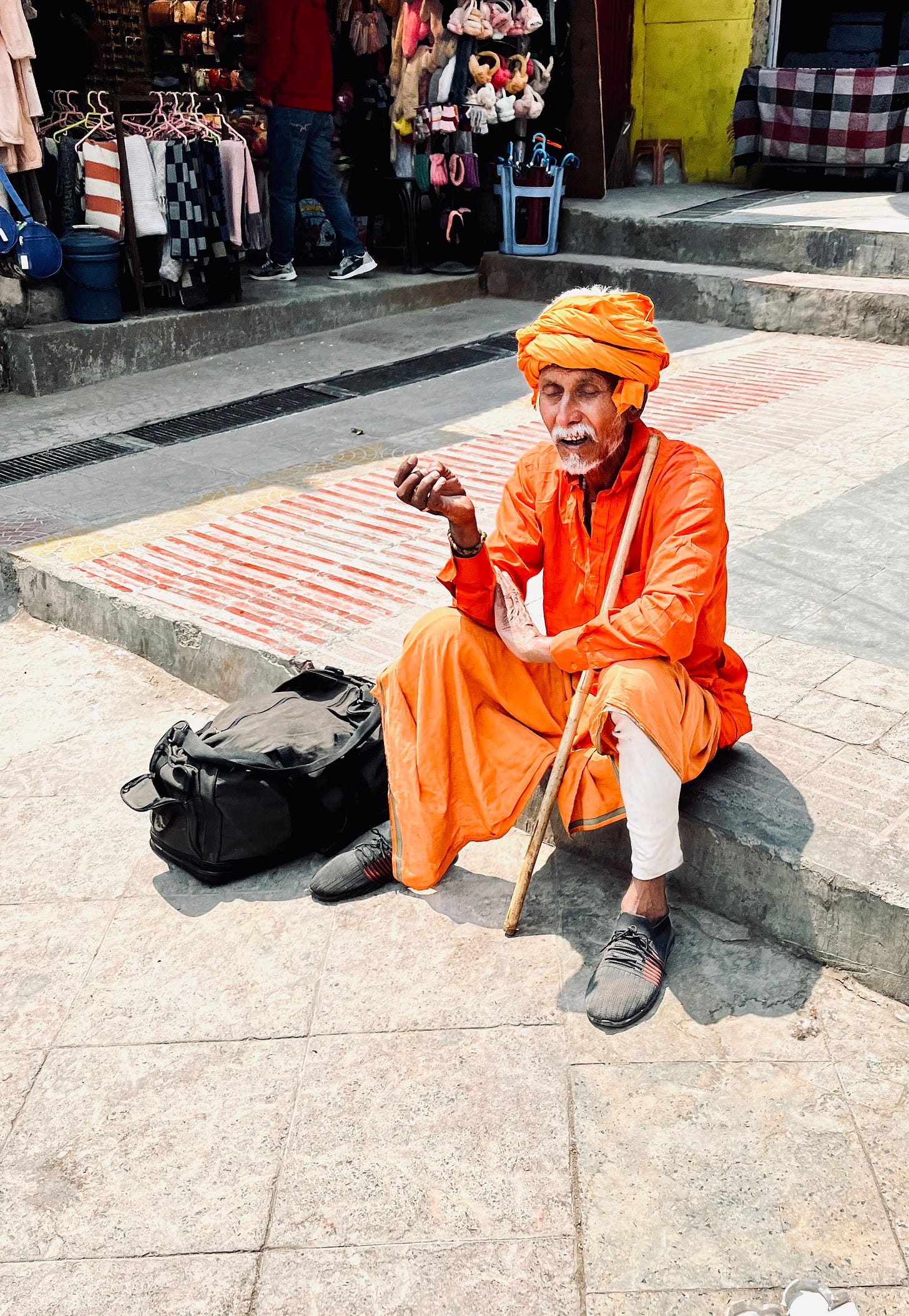
India is a land of godmen and godwomen — some real, many fake. Here, I capture one in surprisingly fashionable shoes. What might he be carrying in that backpack?
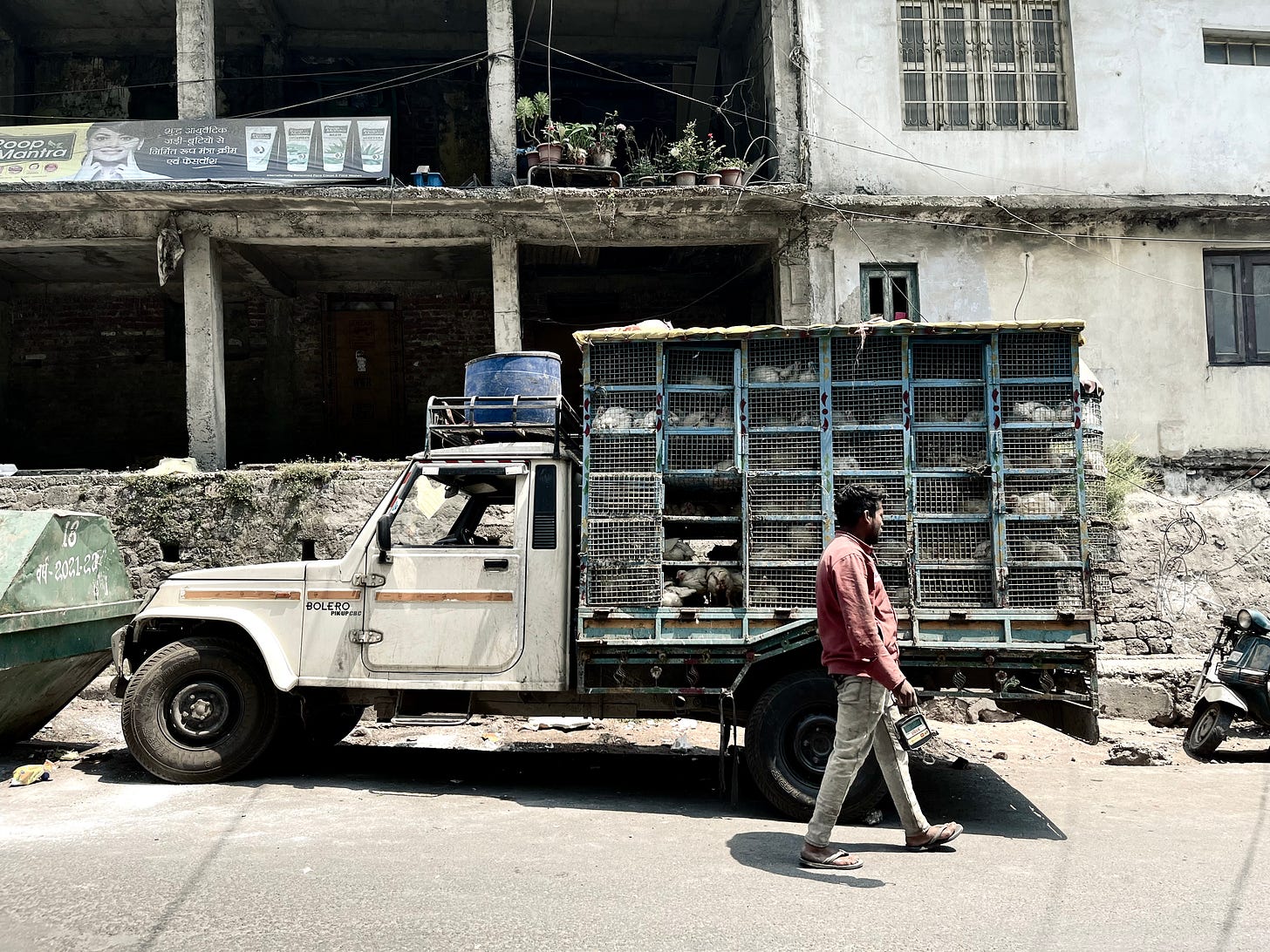
A migrant worker walking with his portable radio as he stops to sell some chickens in the local market. Notably, despite the open cage doors, the feathered captives stay put — perhaps an unwitting display of Stockholm syndrome?
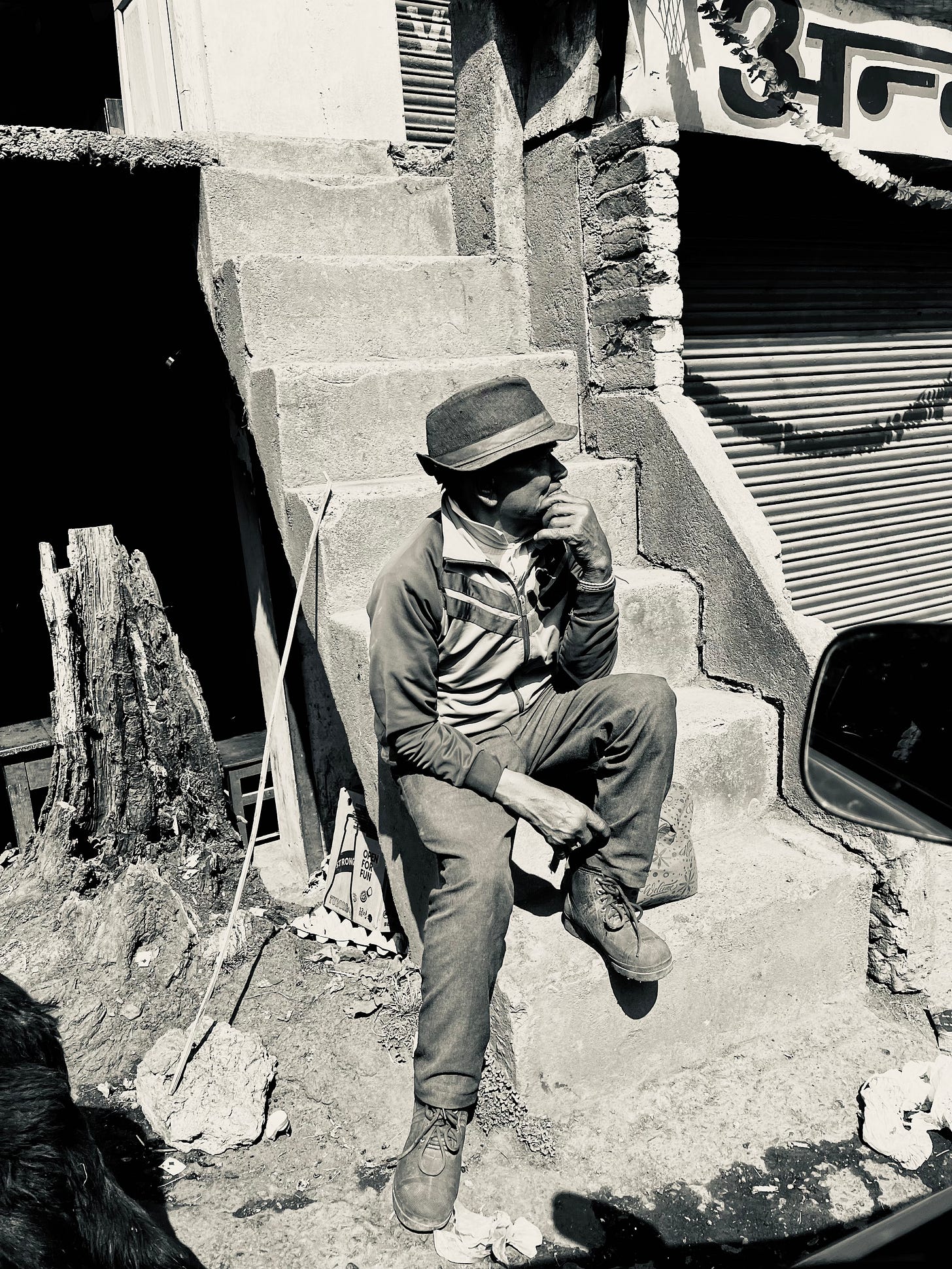
An older, much famous Gandhi once said: “India is not Calcutta and Bombay. India lives in her seven hundred thousand villages.” To this, during election season, I’d like to add: India is neither the newer Gandhi nor the incumbent Modi. India is her 1.4 billion (and counting) people.
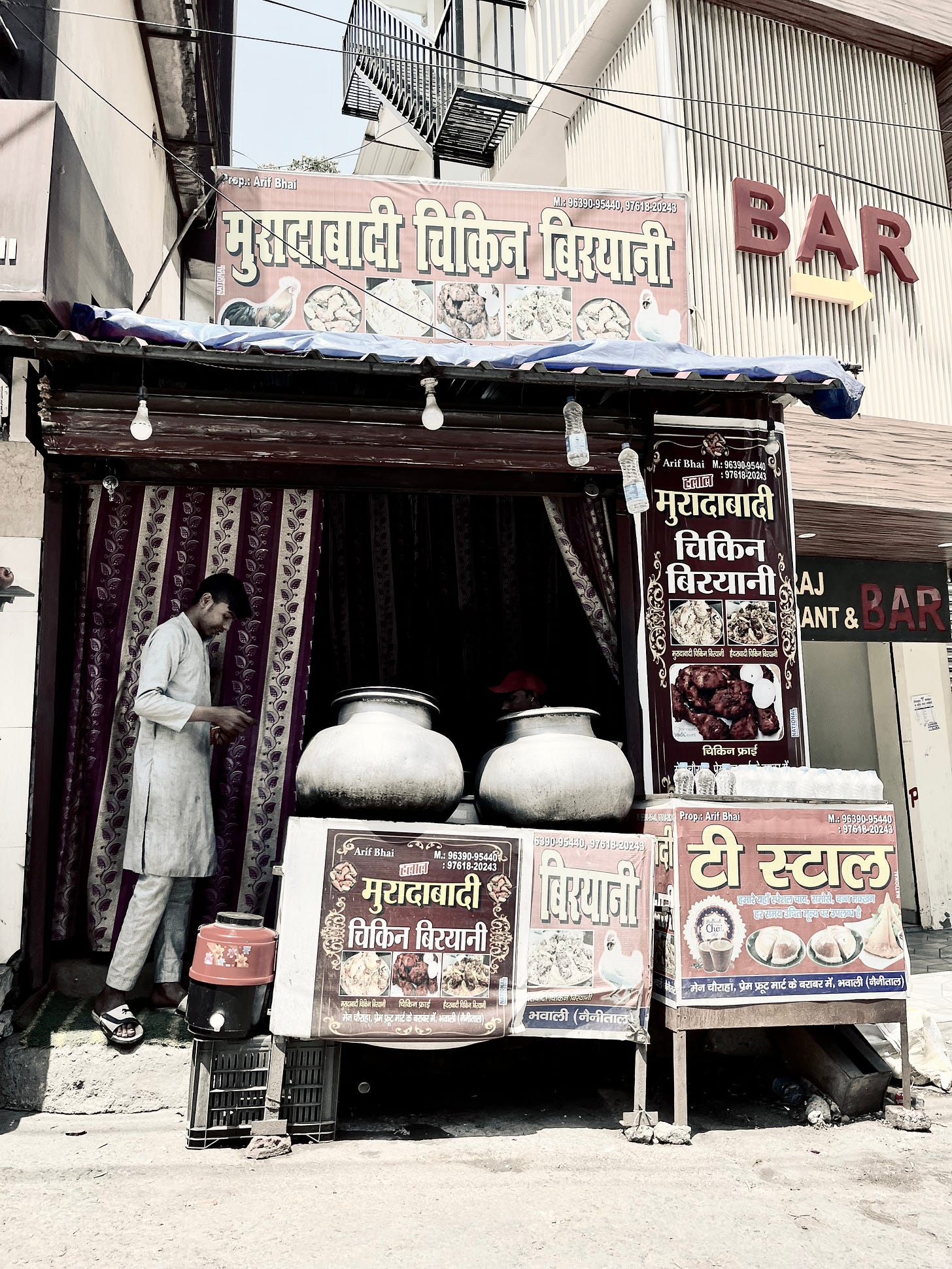
Outside a shop selling both biryani and chai, a lone man waits patiently for his order. Who might he be bringing this feast home to, I wonder?
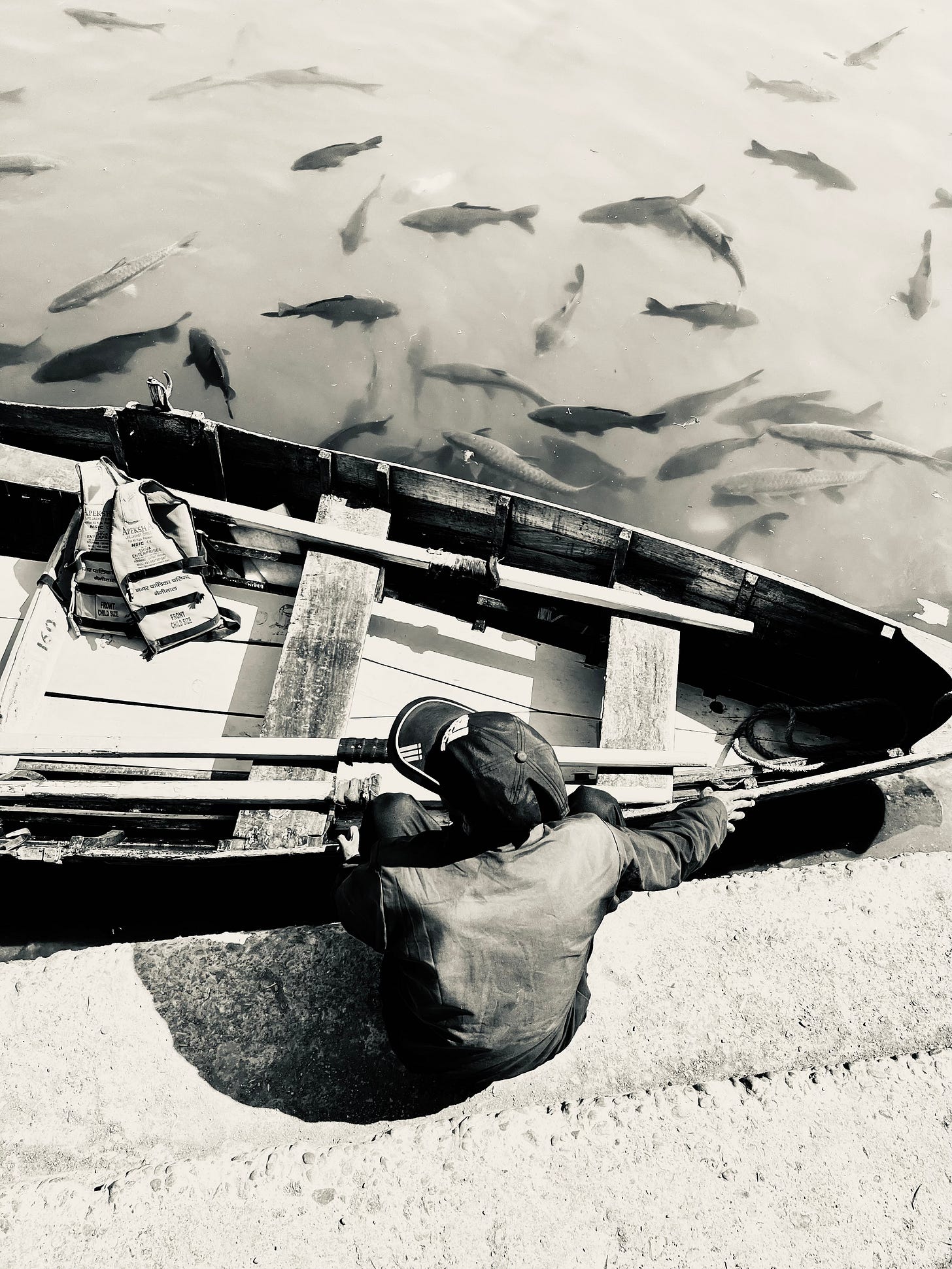
A young navigator waits, hungry to glide tourists over the clear waters of Nainital, the fish acting as moody spectators to the anticipation reflected in his eyes. I can’t help but think of Rabindranath Tagore’s famous lines: “You can’t cross the sea merely by standing and staring at the water.”
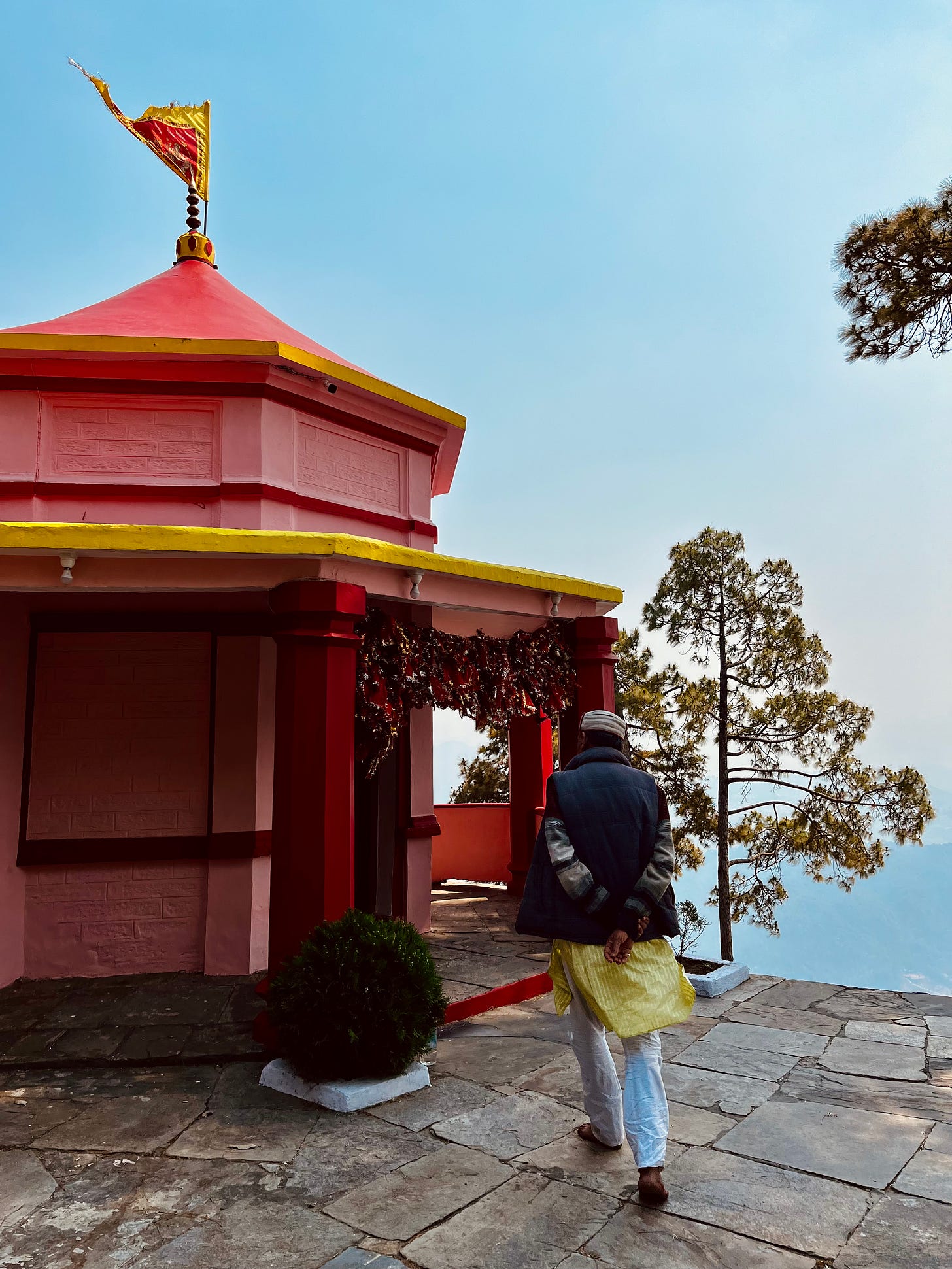
At Kasar Devi, a temple perched on a hilltop overlooking the Kumaoni Himalayas, I was struck by the cosmic energy that permeated the air — it was in this moment that I realized once again that India’s true essence lies in its spiritual diversity. I couldn’t help but capture the serene demeanor and purposeful stride of the temple priest — if only we all could walk to our place of work (and worship) with such timeless elegance.

And finally, here’s a snapshot from the Shatabdi from the day I left Kumaon. A friend and fellow writer,
, recently penned a piece on a peculiar Indian quirk: the rush to stand in the aisles as soon as a flight touches down — a sort of aeronautical herd mentality. It’s a scene I’ve oft-witnessed, one that Rohan vividly describes with evocative lines like, “as the plane taxies down the runway, its human cargo stirs.” Yet, what I’ve noticed in my travels is that this impulse isn’t confined to air travel alone — it seems to permeate nearly every mode of transport in India, though, fortunately, an autorickshaw’s limited headroom spares its passengers from premature egress. In this image, I’ve tried to capture the restless human cargo aboard the Shatabdi Express from Kathgodam, who stand ready a good 45 minutes before reaching New Delhi. What the picture doesn’t show, however, is the mix of human emotions swirling around — a baby crying in the background, a couple bickering, a priest engrossed in his iPhone (forgetting perhaps that he has renounced worldly attachments), a father blocking the sole path to the overflowing toilet with all five of the family’s suitcases, neighbors initiating overdue conversations, and me behind the lens, trying to distill the essence of travel in India into a single frame while my parents enjoy a shut-eye beside me.



Loved this
Pictures do say a thousand words dear Nishad, however your words too bring the pictures to life.